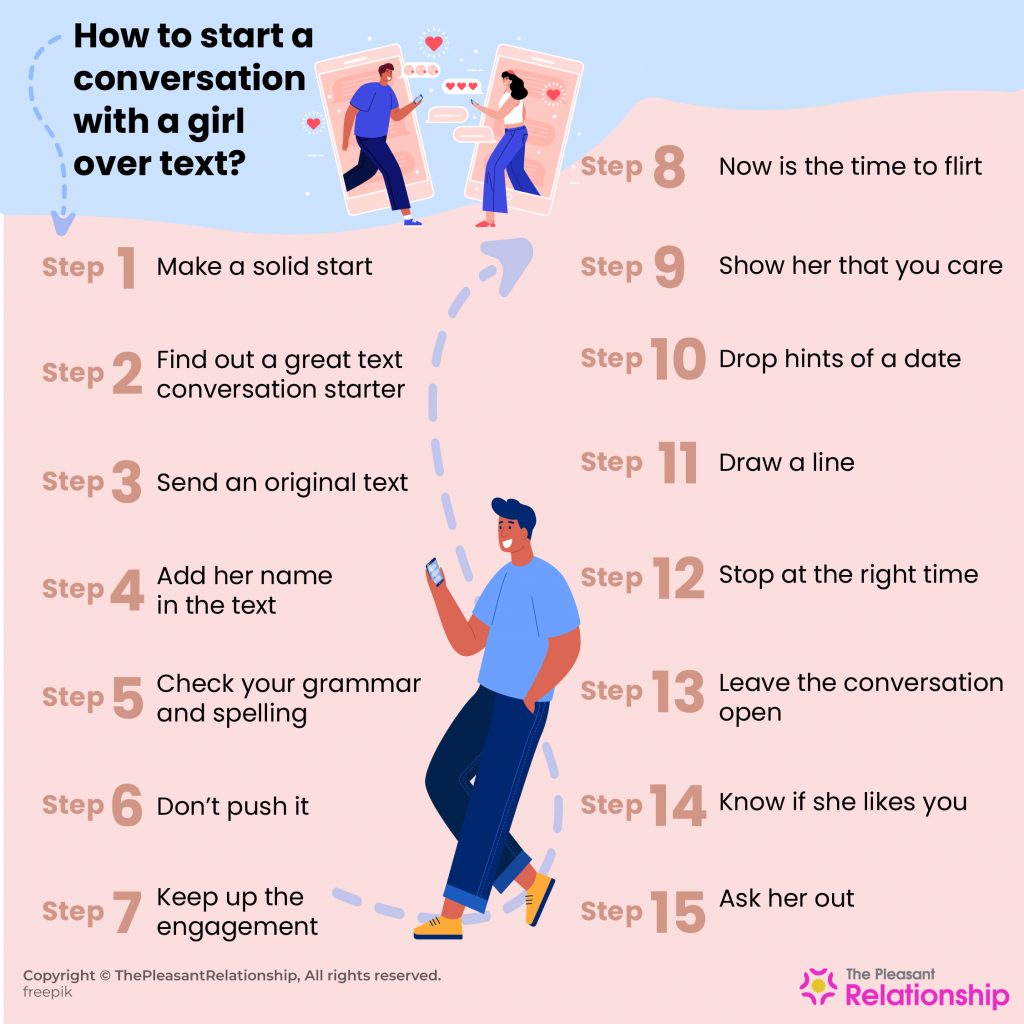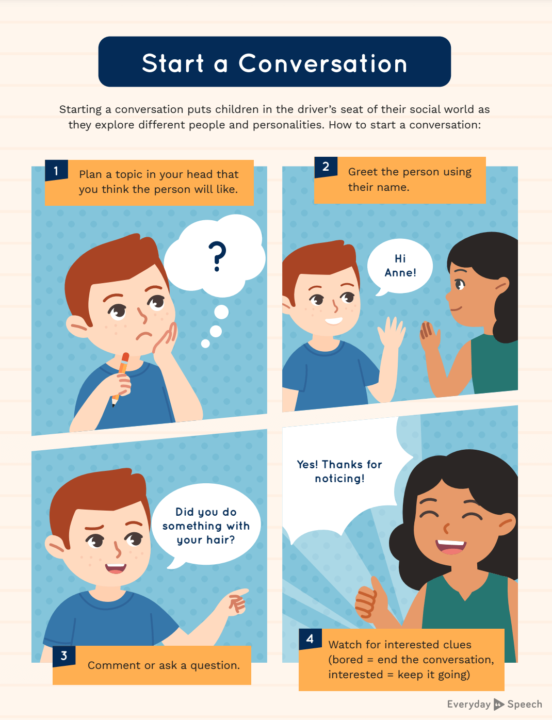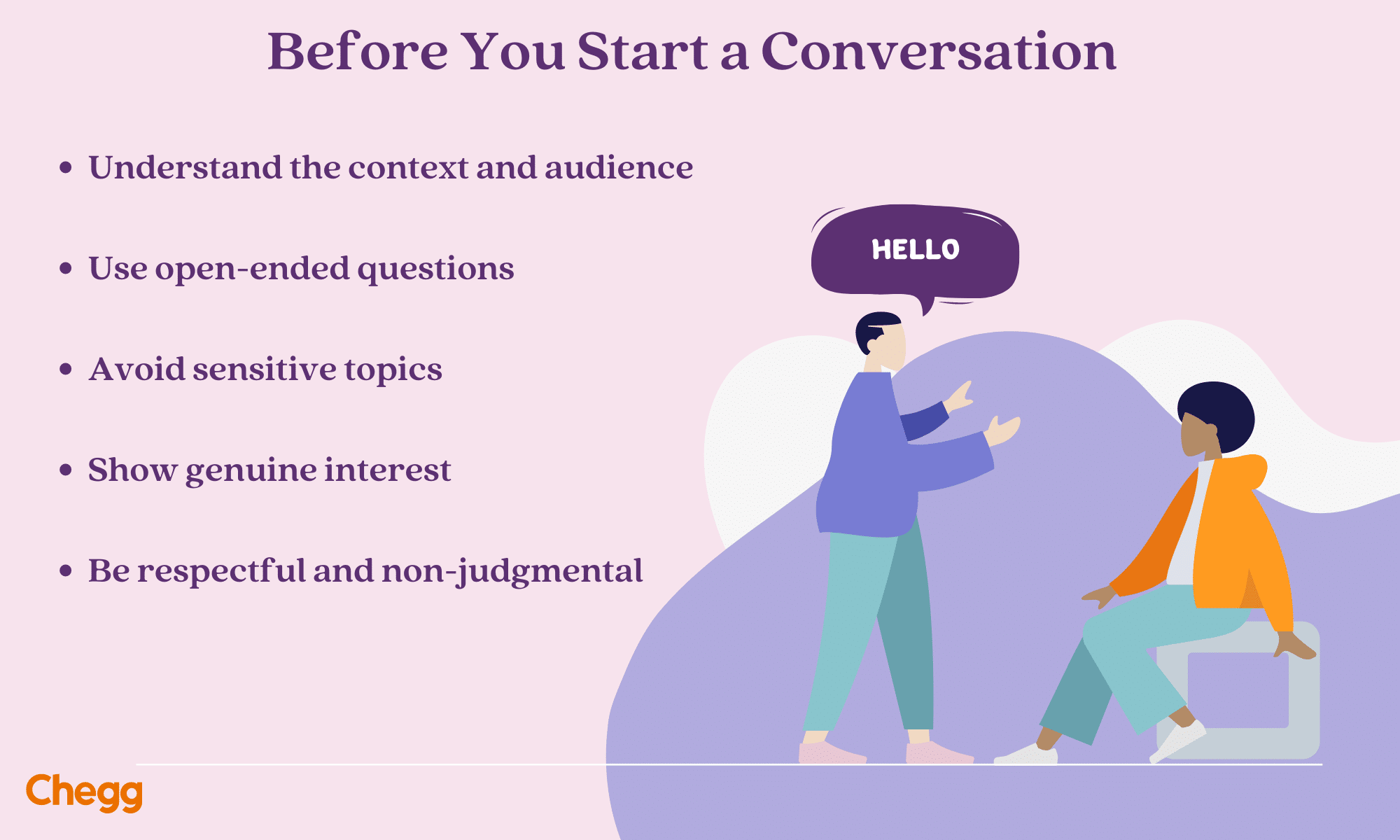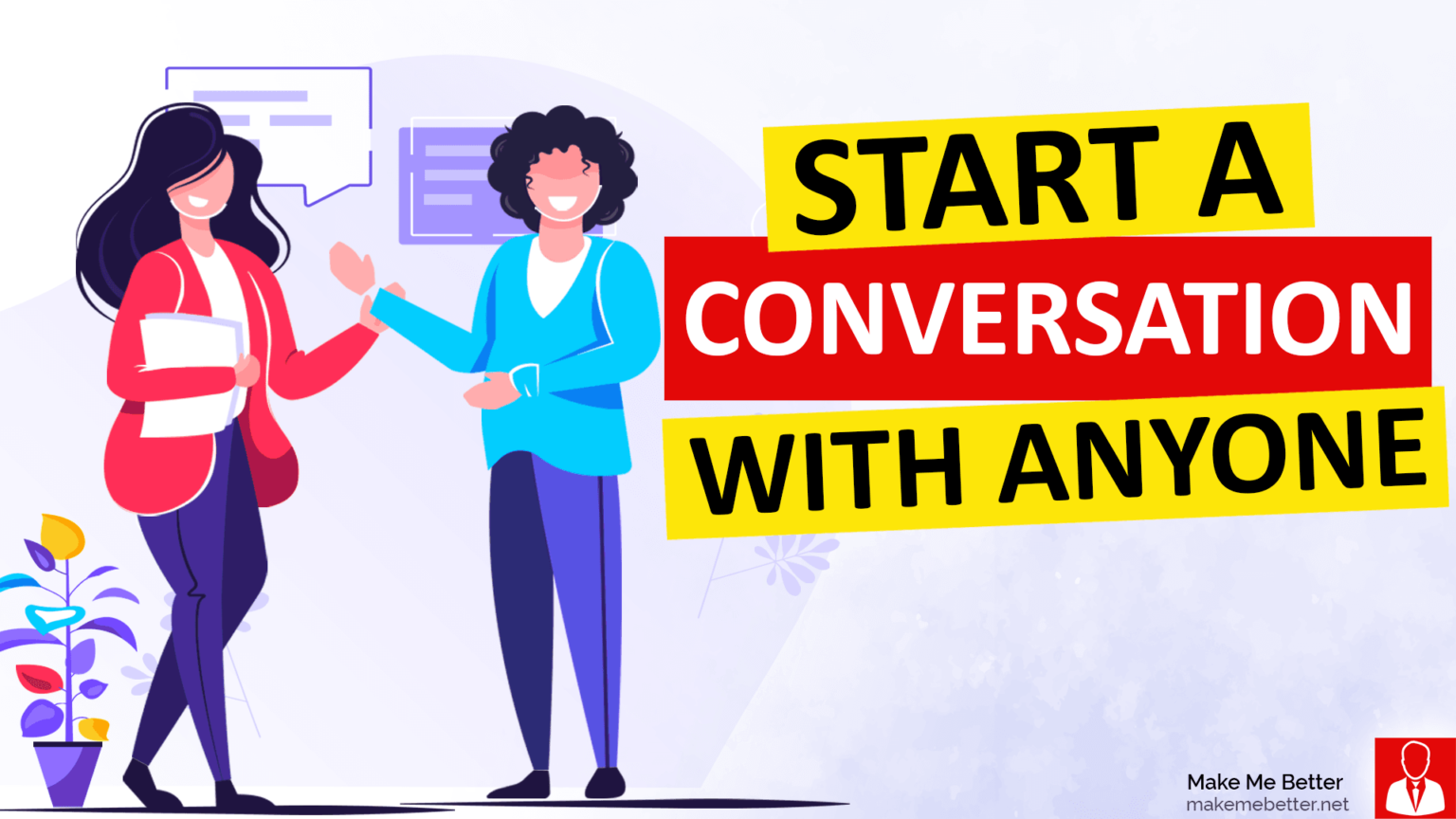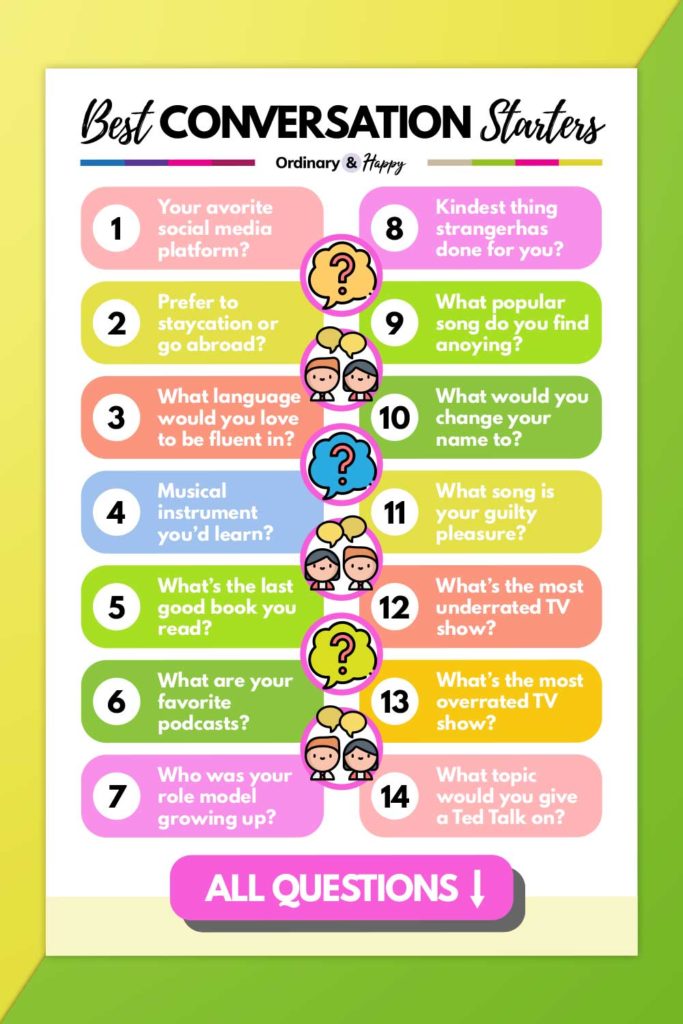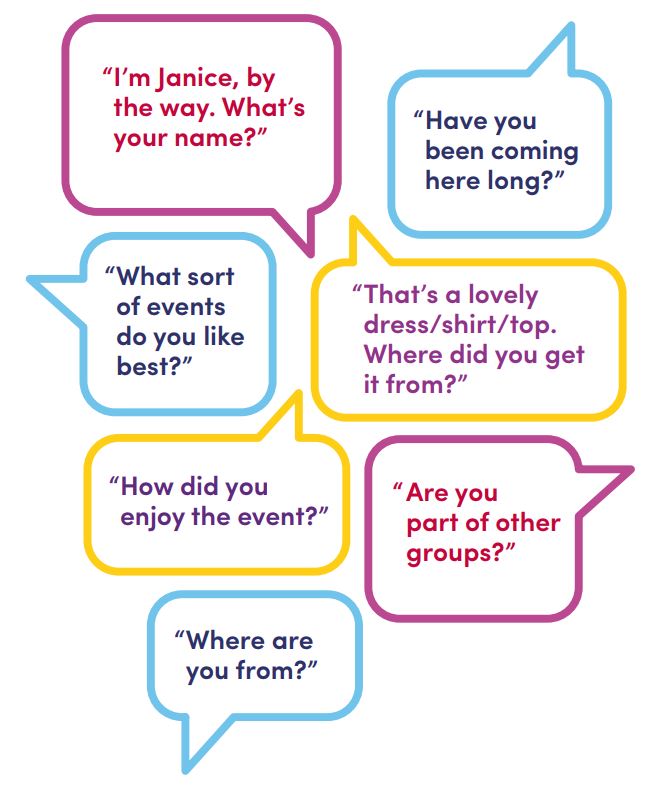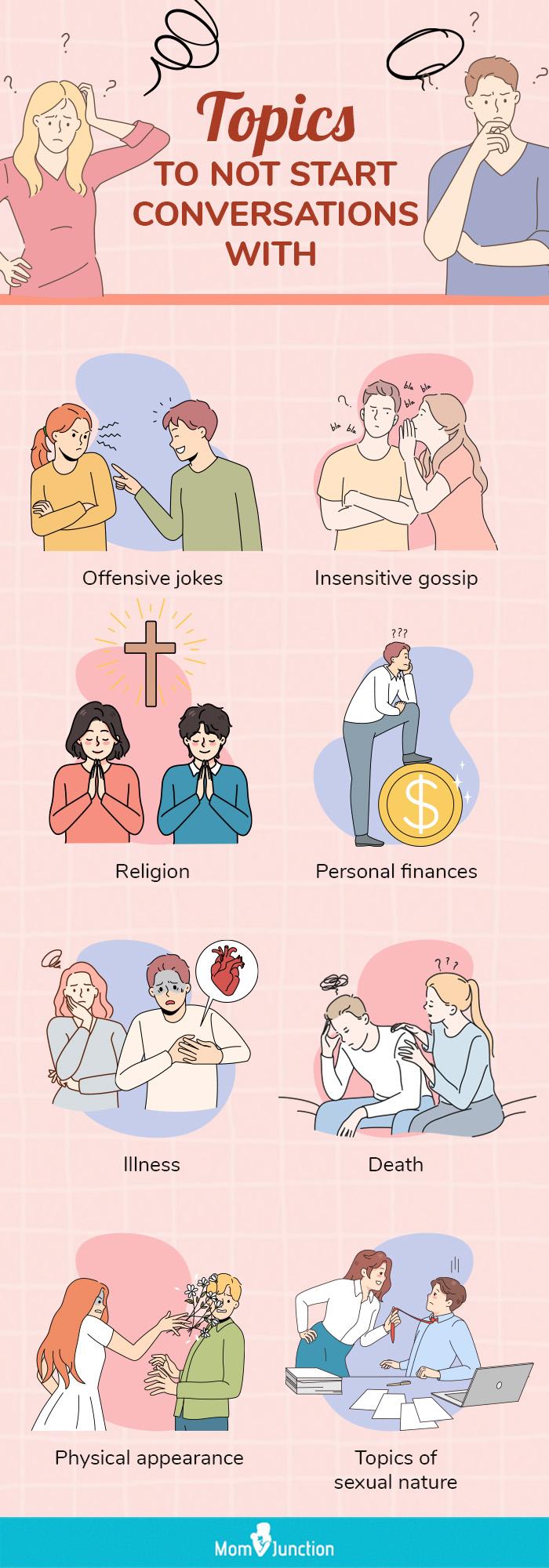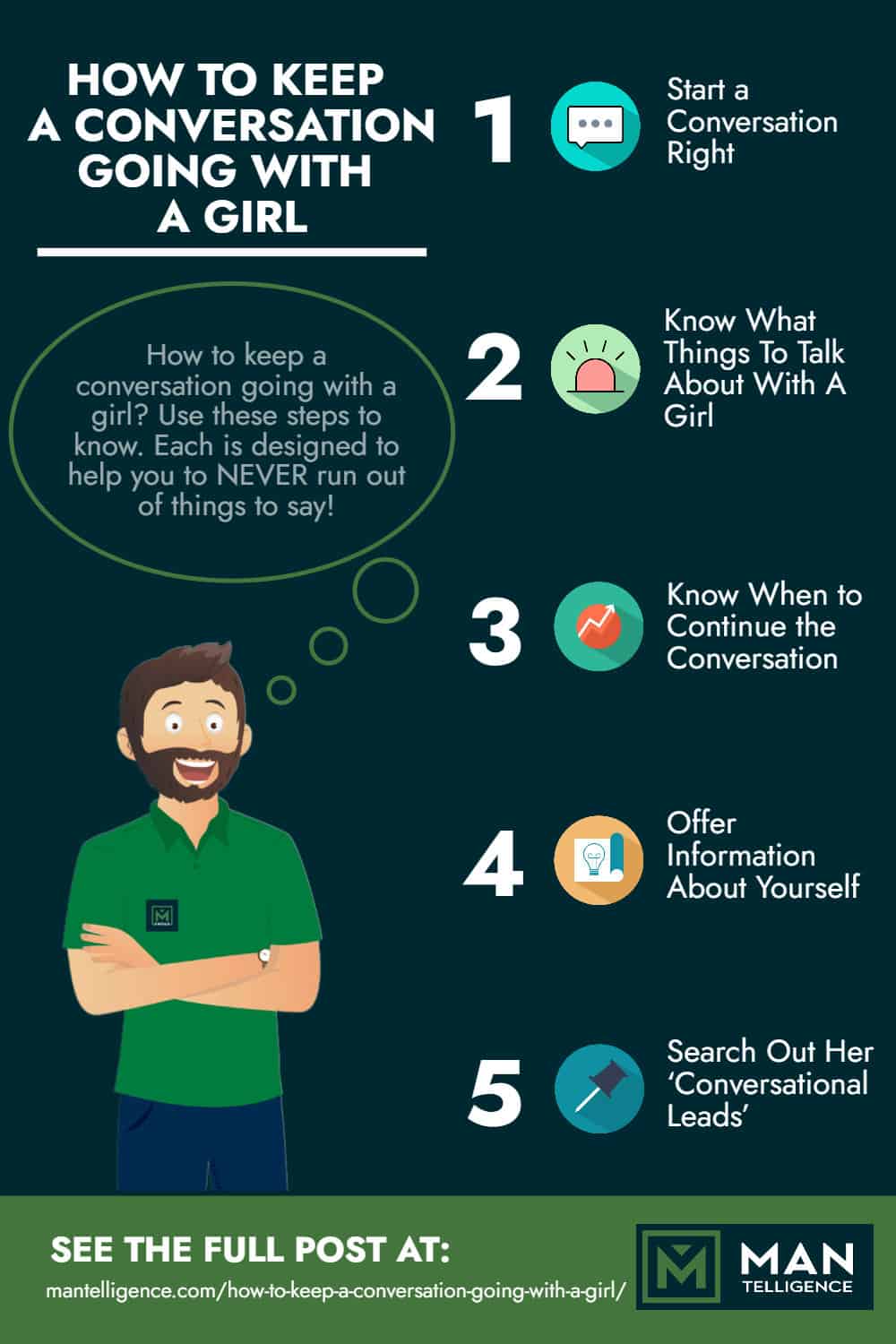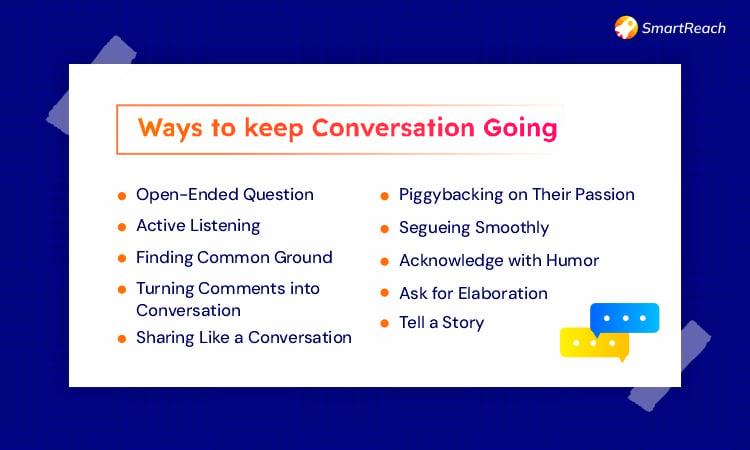How To Start And Hold A Conversation

Navigating social interactions can be daunting, but mastering the art of conversation is a valuable skill. Whether it's for networking, building relationships, or simply enjoying social gatherings, learning how to initiate and maintain a conversation is crucial for personal and professional success.
This article explores practical strategies for starting and holding engaging conversations. It provides a roadmap for individuals seeking to improve their communication skills and build stronger connections with others. Learning conversational techniques can lead to increased confidence, improved relationships, and expanded opportunities.
Starting the Conversation: Breaking the Ice
The first step in any conversation is the initial approach. Many people find this to be the most challenging aspect. The key is to be approachable and genuine.
Open-ended questions are your best friend. Instead of asking a simple "yes" or "no" question, pose questions that require more than a one-word answer. For example, instead of asking "Are you enjoying the event?", try "What's been the most interesting part of the event for you?".
A simple observation about the environment can also be a great conversation starter. "This is a beautiful venue, isn't it?" or "I love the music they're playing" are simple and non-threatening openers. Be sure to tailor your observation to the specific setting.
Offering a compliment, if genuine, can also ease the tension. However, ensure the compliment is appropriate for the context and not overly personal. Focus on something like their attire or a contribution they made in a meeting.
Holding the Conversation: Keeping it Flowing
Once the conversation has started, the goal is to keep it going smoothly. This involves active listening, asking follow-up questions, and sharing relevant information.
Active listening is more than just hearing the words someone says. It involves paying attention to their body language, tone of voice, and emotions. Show that you're engaged by nodding, making eye contact, and offering verbal cues like "I see" or "That's interesting."
Follow-up questions demonstrate that you're truly interested in what the other person is saying. If they mention a hobby, ask them how they got into it or what they enjoy most about it. Tailor your questions to elicit further details.
Sharing related personal experiences can create a sense of connection. However, avoid dominating the conversation. The goal is to create a balanced exchange where both parties feel heard and valued. Try to remember Pareto's 80/20 rule. Be present 80% of the time and talking 20% of the time.
Be mindful of non-verbal cues. If the other person is looking around, checking their phone, or giving short answers, it might be a sign that they're ready to move on.
Navigating Difficult Topics
Not every conversation will be smooth sailing. Sometimes, you might encounter controversial or uncomfortable topics. It's important to have strategies for navigating these situations gracefully.
If you disagree with someone, avoid becoming argumentative. Instead, acknowledge their perspective and politely offer your own viewpoint. "I understand your point of view, but I see it a bit differently because..." is a good approach.
If you feel uncomfortable with a topic, it's perfectly acceptable to change the subject. A simple "That's interesting, but I've been meaning to ask you about..." can smoothly redirect the conversation. Be ready to quickly change the subject to something more appropriate.
Don't be afraid to admit when you don't know something. It's better to be honest than to pretend to be an expert on a topic you're unfamiliar with. An honest "I'm not sure about that, but I'd be interested in learning more" can be a good response.
Ending the Conversation Gracefully
Knowing how to end a conversation is just as important as knowing how to start one. A graceful exit leaves a positive impression.
Look for natural breaks in the conversation. When there's a pause, take the opportunity to thank the other person for their time and express your enjoyment of the conversation. Try to not abruptly end the conversation.
Use a closing line such as "It was great talking to you," or "I enjoyed our conversation." These are simple and polite ways to signal that you're ready to move on. If it is appropriate, offer a way to stay in touch, such as exchanging contact information.
Remember, practice makes perfect. The more you engage in conversations, the more comfortable and confident you'll become. Don't be afraid to experiment with different techniques and find what works best for you.
:max_bytes(150000):strip_icc()/how-to-start-a-conversation-4582339-5c6f2d15c9e77c000151ba0f.png)
